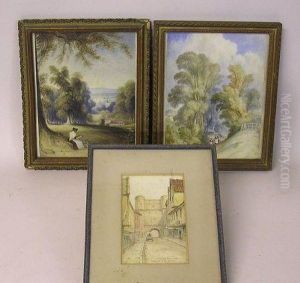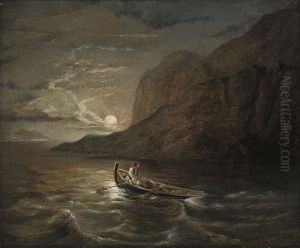William Buckley Paintings
William Buckley is not known as an artist in the traditional sense of painting, sculpture, or other visual arts. Instead, his life story is one of survival and legend, which has inspired various forms of artistic and cultural expression over the years. Born in England in 1780, Buckley was a former soldier who was convicted of receiving stolen goods and subsequently transported to Australia as a convict in 1803. His story became legendary after he escaped from the penal settlement of Sullivan Bay near Port Phillip and lived among the Aboriginal people of the Wathaurong tribe for 32 years.
Despite the initial misunderstanding and mistrust, Buckley's integration into the Wathaurong community is a remarkable tale of cross-cultural interaction. He adopted their customs, language, and way of life, effectively becoming a member of the tribe. His incredible tale of survival in the harsh Australian landscape was almost unbelievable to the European settlers when he re-emerged into colonial society in 1835.
After rejoining European settlers, Buckley's unique knowledge and experience made him a valuable intermediary between the indigenous populations and the colonists, although his life in the following years was marked by the challenges of navigating his complex identity and loyalties. He worked in various capacities, including as a bricklayer and interpreter, before passing away in 1856.
Buckley's life story has been the subject of numerous books, plays, and artworks, reflecting the enduring fascination with his story of survival, identity, and the early contact history between European settlers and Indigenous Australians. His legacy is a reminder of the capacity for human resilience and the importance of understanding and respect between diverse cultures. Although not an artist in the conventional sense, the narrative of William Buckley's life continues to inspire and influence Australian culture and art.

